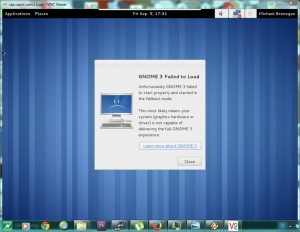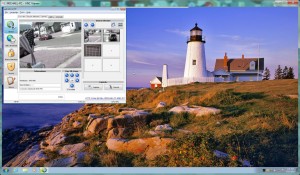Well, who said the road was going to be an easy one? This is what I got when I logged into the server. Upon checking over the driver and hardware, I discovered that it was using the intel driver, and that was correct, but it was set to 800×600. Easy fix, I just set it to 1024×768, and got here:
These past 20 years of using Linux are really paying off, heh. I was really surprised that the Ethernet interface started UP, and that the stream was still streaming, as were the request pages. However, CRAB blog was bitching about the php extensions to MySQL. As expected, YumEx was non-functional. So, as root user:
# yum update yumex
Then, used YumEx to focus on the package, php-MySQL. It upgraded it, AND all of its dependencies, without a hitch.
After all that, a simple reboot, and reload YumEx in order to update all packages, as well as the kernel, and kernel-headers. 😉




